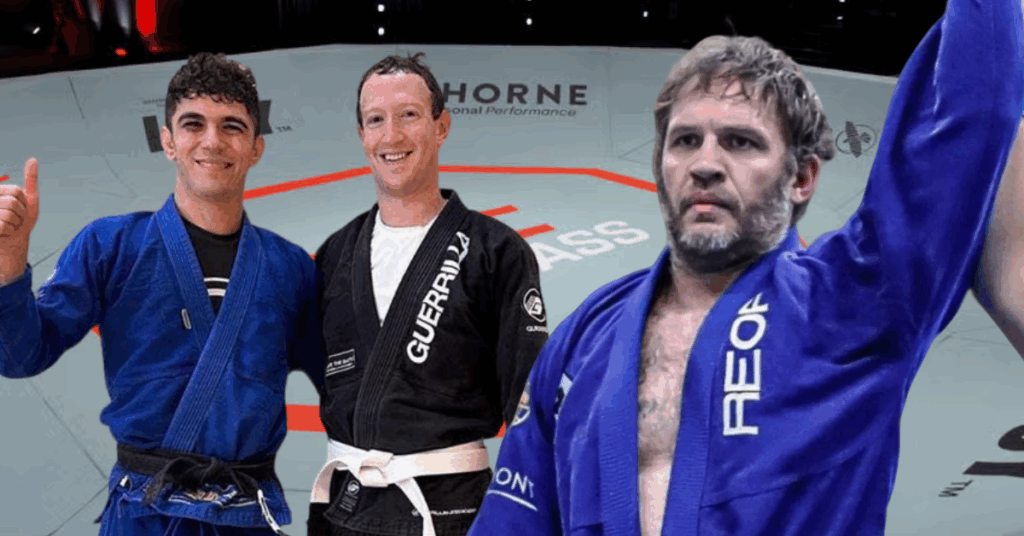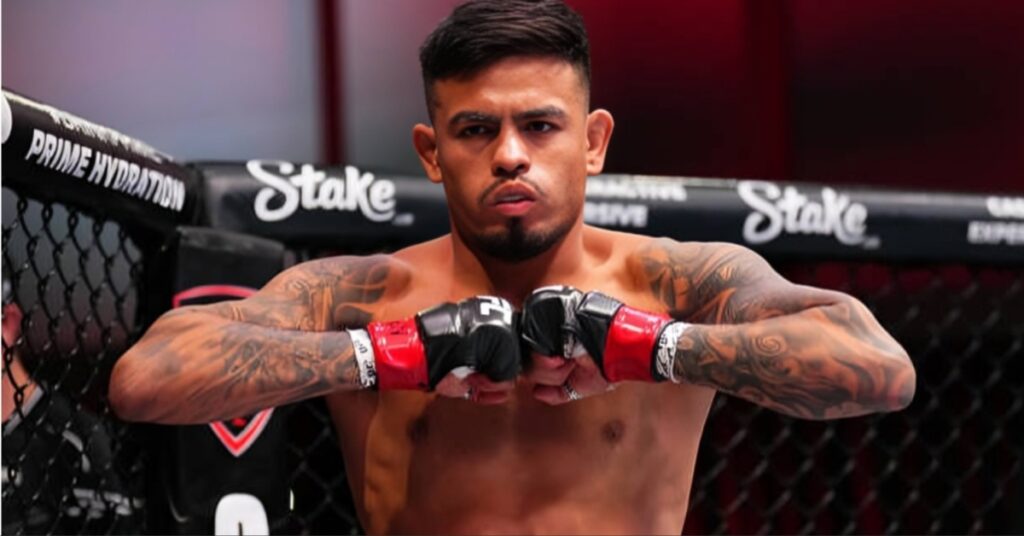Savate Kickboxing: Everything About French Kickboxing
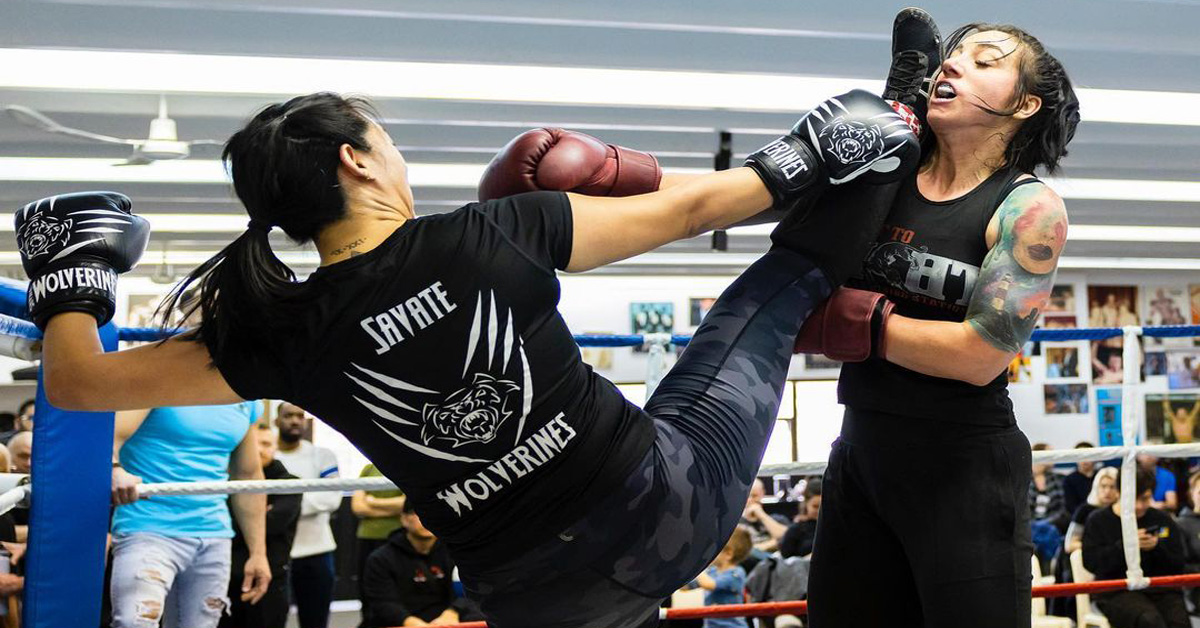
In the history of martial arts, there have been various styles of kickboxing created. One of the most effective that many don’t know the history of is the French style known as Savate.
Here is everything you need to know about the French kickboxing style of Savate. Read below to learn everything from the kickboxing style’s history, techniques, and rule sets.
What is Savate?
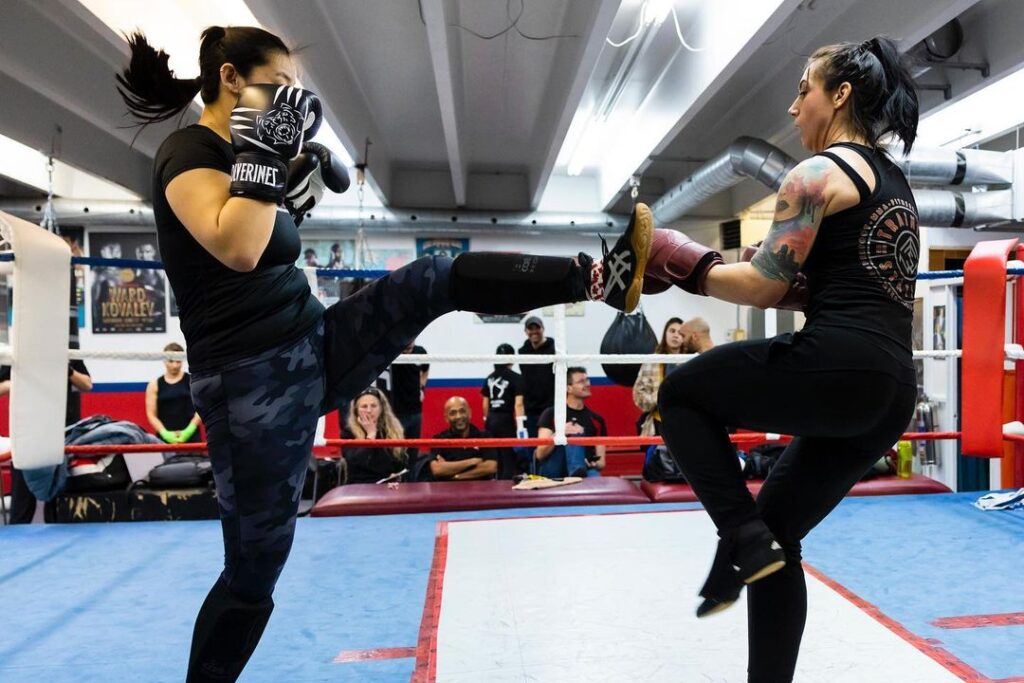
The striking style of savate or also known as boxe francaise(French Boxing) is a French striking martial art. It’s a martial art that was developed in the 17th century and has evolved into a sport and form of self-defense.
The word “savate” comes from the French word for “old shoe.” Early practitioners were sailors, who wore heavy boots, which is how the martial art got its name.
Another story about the word “savate” comes from a punishment Napoleon’s soldiers would give to prisoners. To show their kicking prowess, the soldiers would kick the butts of the prisoners. The punishment was called “savate.”
Through centuries of evolution this form of French kickboxing became an effective martial art.
The History of Savate Kickboxing
The fighting art of Savate is a martial art with over four decades of history. Here are some of the most significant parts of the martial art’s history.
The Early Development of Savate
The art of boxe francaise (French Boxing) originated during the 17th century by French sailors in Marseille. According to legend, these French soldiers learned kicking techniques of various martial arts during their trips to Asian nations.
Use of these techniques that the French sailors became common to see in bar fights and street fights involving them. The sailors called these types of fights “Chausson” for the type of slippers they were normally wearing while fighting.
Along with the kicks, French sailors also developed different open-handed slapping techniques. The reason why these open-handed strikes were developed was due to French laws that considered closed-fists deadly weapons.
Street Fighting Savate
Another type of Savate was developed in Northern French within slums of the region. In contrast to the slippers worn in chausson, in this style heavy shoes and boots were worn.
The rules of street fighting Savate were also wildly different from the type practiced in Marseille. In this version, kicks were generally kept low with the intent to break an opponent’s bones.
This version of the fighting style also included palm strikes known as “la baffe.” Historians also note that different early styles of the martial art were also practiced within the ports of Spain and Italy.
Proof of this fact comes from one of the kicks in Savate being called “chasse italien” or Italian kick.
The Formation of Savate
The two martial artists credited for the formation and development of the martial art are Michel Casseux and Charles Lecour. Casseux opened the very first Savate school, which promoted a regulated version of chausson and Savate.
Despite opening the gym, the style still had its bad reputation of being a street fighting style. Charles Lecour created a modern version of the martial art in 1830 that helped legitimize the fighting art.
Lecour incorporated different boxing and kicking techniques and blended them together. He saw Savate as both a sport and a form of self-defense and added English boxing gloves into the practice.
Charles added gloves after watching English boxing and realized they’d protect his students hands during practice.
As the time progressed, Lecour’s students Joseph and Charles Charlemont continued to share the art of Savate.
The Codification of Savate
After a century of work, Savate was finally codified during the early 1900s. The fighting style was codified by the Committee National de Boxe Francaise under Charles Charlemont’s student Count Pierre Baruzy.
Count Pierre Baruzy is seen as the father of modern Savate, who was an 11x champion of France before WWI.
French boxing also received high recognition in 1924 when it was included as a demonstration sport at the Paris Olympics. Today, the fighting art is still in the process of being selected to become an official Olympic sport.
The Techniques of Savate
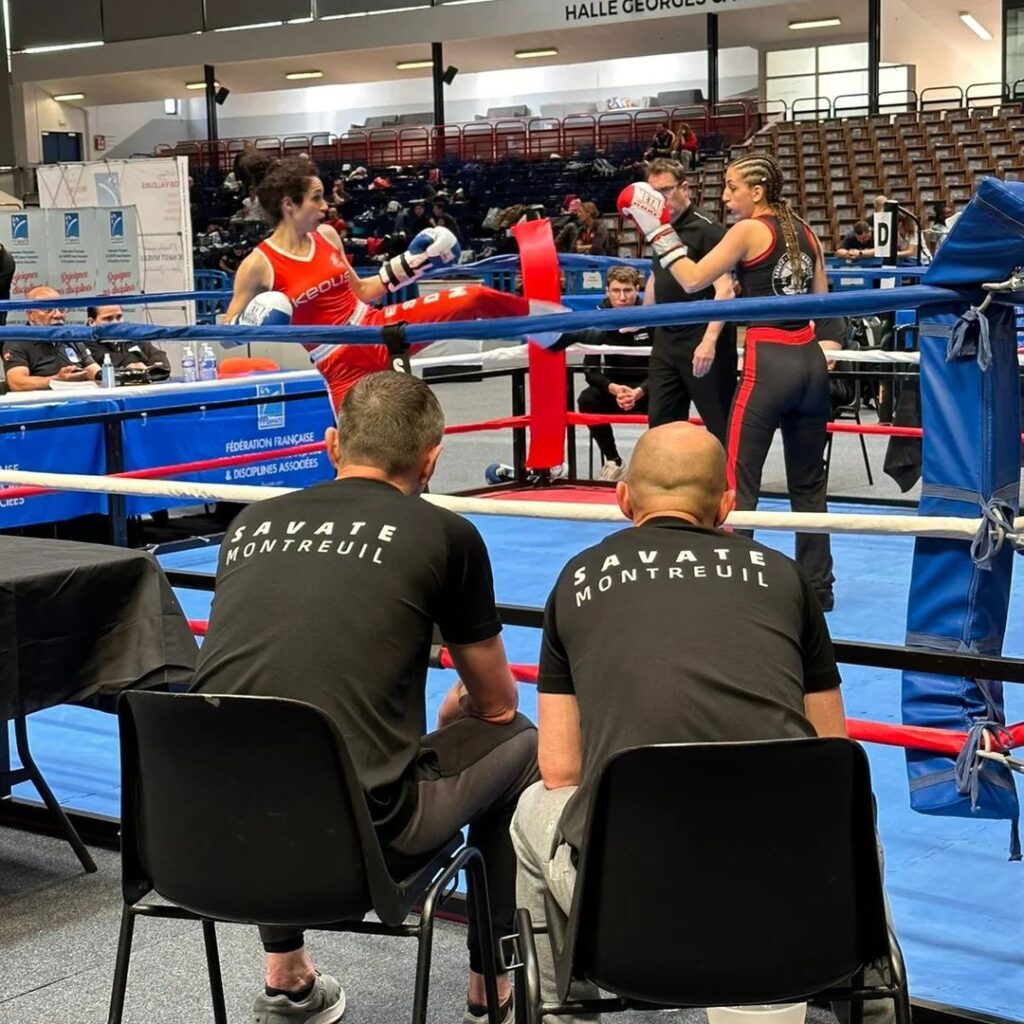
The art of Savate uses a wide variety of striking techniques within the martial art. Here is a list of some of the techniques used within French boxing.
Savate Punches
- Direct Bras Avant: Jab/Lead Hand
- Direct Bras Arriere: Cross/Rear Hand
- Crochet: Hook Punch
- Uppercut
Savate Kicks
- Fouette(Whip): The Savate roundhouse kick that makes contact with the hard rubber toes of the shoes worn in the martial art.
- Chasse Lateral: Side Kick
- Chasse Frontal: Front Kick
- Chasse Figure: High Kick
- Chasse Median: Medium Kick
- Chasse Bas: Low Kick
- Revers: Reverse or hooking kick
- Coup de Pied Bas: Low sweeping kick
The Rules of Savate Kickboxing
Savate is a unique style of kickboxing that has its own unique rule sets. Here is an example of the rules used in French boxing.
- Mandatory Pre-Fight Fighter Greeting
- 3 Rounds, 2 Minutes Each, 1 Minute Rest
- All Punches Are Legal
- Kicks Must Hit With Shoe/Boot Only
- Sweeps Are Legal
- No Elbow Strikes
- Sweeping Is Legal
- Disqualifications: Spitting, Pushing, or Grabbing
Types of Savate Combat
In French boxing, there are three types of combat performed by practitioners. There is assault, pre-combat, and combat.
- Assaut: In assault, the competitors focus on their technique while making contact. Referees give out penalties for excessive sport.
- Pre-combat: Pre-combat allows for full contact, but competitors must wear full head gear.
- Combat: Full contact with no headgear.
The Savate Ranking System
The ranking system in Savate is marked by different colored gloves. Here are the six glove ranks used within the martial art.
- Gant Bleu(Blue Glove)
- Gant Vert(Green Glove)
- Gant Rouge(Red Glove)
- Gant Blan(White Glove)
- Gaunt Jaune(Yellow Glove)
- Gant D’Argent Technique(Silver Glove)
On average, it takes over five years to go through all of the ranks. There are also ranks above the silver gloves, which are the hardest ranks to achieve in Savate.
Savate Teaching Ranks
There are also separate ranks for Savate practitioners, who wish to be instructors. There are three separate teaching Ranks.
- Initiateur(Instructor Level 1)
- Moniteur(Instructor Level 2)
- Professeur(Professor): Professeur is the hardest teacher rank to achieve in French boxing that is rarely given.
The Savate Uniform
The uniform worn in modern Savate is a unique set that is a blend of boxing and kickboxing uniforms. The French boxing uniforms include:
- Savate Pants
- Savate Shoes
- Integrale(Tank Top)
- Boxing Gloves(With/Without Padded Palms)
- Head Gear(Junior Competition)
- Shin Guards
Savate vs. Muay Thai & Other Kickboxing Styles
When Savate goes against other striking styles, they have a great advantage of using long range attacks. A good practitioner of the French martial art can keep their opponent at a distance, while delivering powerful strikes.
Savate Kickboxing Practitioners
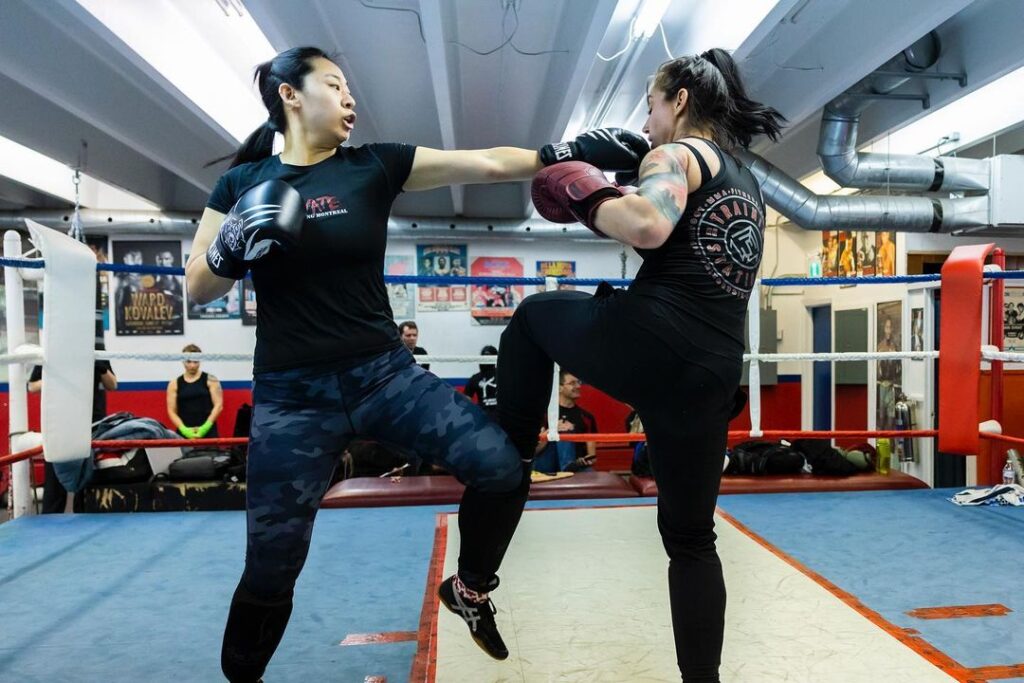
There have been a variety of different Savate kickboxers throughout the history of combat sports. Here are four of the most known practitioners of the French martial art.
Francois Pennachio
Francois Pennachio was a legendary Savate kickboxing champion during the 1980s and 1990s. On top of being an accomplished French boxer, he also won titles in Karate, Dutch kickboxing, and Muay Thai. All while competing in over 100 professional fights.
Cheick Kongo
Cheick Kongo is one of the most known Savate practitioners within MMA. The French MMA veteran has fought for decades in all of the major promotions against the best fighters. Most notably is Kongo’s epic comeback KO win against Pat Barry.
Gerard Gordeau
Gerard Gordeau was a champion Savate kickboxer and one of the original UFC fighters, who competed in UFC 1. Gordeau is most known for his vicious KO kick against Teila Tuli that sent the sumo wrestler’s teeth flying.
It was an iconic moment that will always be remembered in MMA history.
Christian M’Pumbu
Another successful Savate kickboxer within MMA is former Bellator Light-Heavyweight Champion Christian M’Pumbu. The French-Congolese fighters was the inaugural Bellator Light-Heavyweight Champion during the height of his career.
Savate in Pop Culture
Within pop culture, there have been various portrayals of Savate kickboxing within comic books, games, and movies. Here are some of the characters who were French boxing practitioners.
- Nightwing: Former Robin and protege of Batman is a martial art expert with one of the styles being Savate.
- Logan’s 3: Logan 3 in the novel Logan’s Run was noted for using the style for self-defense within the novel.
- Ulrich Stern: Ulrich Stern from the anime Code Lyoko is a practitioner of the French martial art.
- Ash Crimson: The King of Fighters character uses various techniques from the martial art within the video game.
The Legacy of Savate Kickboxing
Savate has a rich history of four centuries and has evolved into a popular combat sport and is effective form of self-defense. Today, it is still heavily practiced within France and various parts of Europe.
French boxing is an effective martial art, which definitely has some great techniques that you should consider learning.



